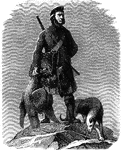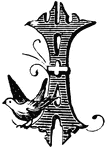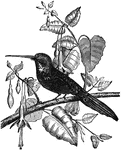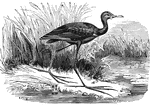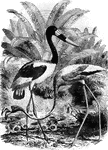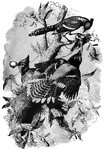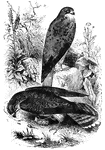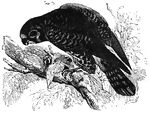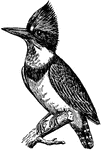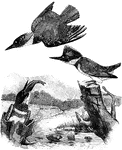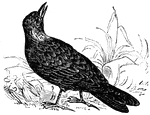
Hyacinthine Gallinule
Also known as the Sultana-fowl. "When eating, sometimes is stands on one foot and uses the other as…
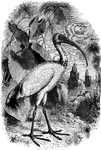
Sacred Ibis
Found throughout Africa, the sacred (or white) ibis was revered by the ancient Egyptians.

Inkstand
This inkstand is designed in a Cinquecento (Italian 16th century) style. It is made of part gold, part…
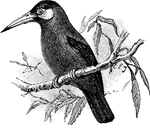
White-Eared Jacamar
The White-Eared Jacamar (Galbalcyrhynchus leucotis) is a bird in the Galbulidae family of jacamars.
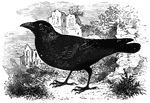
Jackdaw
The jackdaw is a nonmigratory bird, distributed throughout Middle Europe and Asia, as well as Great…
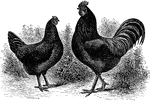
Pair of Black Javas
Originated in the United States. It is one of the oldest American chickens, and is critically endangered…
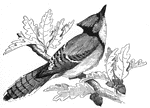
Blue Jay
Blue jays are abundant in the central and eastern states. They are characterized by blue-gray feathers…

European Jay
The European Jay is brownish red tinged with grey. It has a patch of ultramarine blue banded with black…
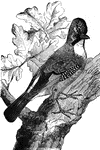
European Jay
The European jay is common through Europe, feeding on vegetables and fruits, as well as on insects and…
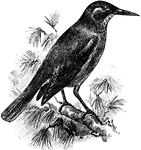
Pinyon Jay
The Pinyon Jay (Gymnorhinus cyanocephalus) is a bird in the Corvidae family of oscine passerine birds.…

The Common Blue Jay
Also known as Cyanocitta cristata. These birds have a loud, harsh voice and striking colors. They occasionally…
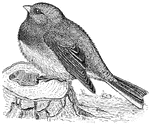
Junco
The Juncos, genus Junco, are small American sparrows. Their systematics are still very confusing after…
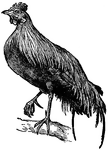
Jungle-fowl
Jungle-fowl is a general name given to the members of the genus Gallus. The red jungle-fowl, G. jerrugineus,…

Red Junglefowl
The Red Junglefowl (Gallus gallus) is a bird in the Phasianidae family of pheasants. It was also known…
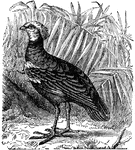
Faithful Kamichi, or Crested Screamer
The Screamers are inhabitants of South America. They live isolated, in pairs, and are mild and peaceful…
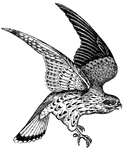
Kestrel
With sharp claws, penetrating vision, and enormous strength, it is easy to understand that these birds…

Right Wing of Kestrel
"Right wing of the Kestrel, drawn from the specimen, while being held against the light."—Pettigrew,…
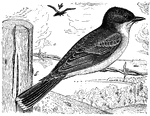
Kingbird
The genus Tyrannus is a group of large insect-eating birds in the Tyrant flycatcher family Tyrannidae.…
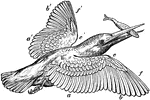
Kingfisher
"Shows the upward inclination of the body and the flexed condition of the wings in the flight of the…

Belted Kingfisher
"Many species of the kingfisher family are found in various parts of the world. The belted kingfisher…
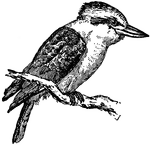
Kingfisher, Dacelo gigas
The Settler's Clock ('Dacelo gigs'), is a very large kingfisher found in Australia, where it receives…
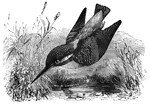
European Kingfisher
Found throughout Middle Europe, the European Kingfisher is a solitary bird that inhabits wet areas,…

Golden-crowned Kinglet
The Golden-crowned Kinglet, Regulus satrapa, is a very small songbird. Adults are olive-gray on the…
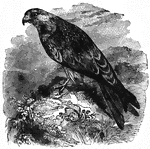
Kite
"Genus Milvus, its length is twenty-six inches; it's color above dark brown; rufous bown below;…
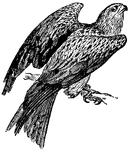
European Kite
European Kites are very miscellaneous feeders, but depend largely on offal, and in the eastern tropics…

Fork-Tailed Kite
"The fork-tailed kite, (N. furcatus) is twenty-five inches long; the wings and tail black;…

Red Kite Resting on a Branch by a Body of Water
"Milvus milvus, the Red Kite or Forked Tail Glead of the Old World, ranging from the Atlantic Islands-except,…

Kittiwake
"It is called the Laughing Gull on account of its cry; it is most easily tamed. The Kittiwake is often…
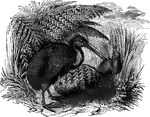
Kiwi
Also known as the apteryx, the kiwi bird posses a long, slender bill, which it uses for feeding on insects…

Kiwi
Kiwi, Apteryx australis, of the South Island, is lighter (than the Apteryx mantelli of North Island),…
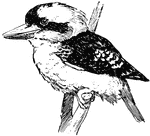
Kookaburra
"He is a kingfisher, with a head as big as his body but a voice that is many times bigger than both…
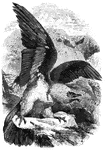
Lammergeyer
The lammergeyer (Swiss for "lamb-killer") is a member of the vulture family, but has a notably feathered…
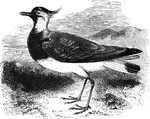
Lapwing
Also known as the peewit, the lapwing is distributed through Europe, as well as some parts of Asia and…
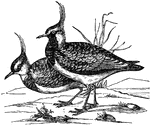
Lapwing
"The lapwing is a most useful bird to man; it destroys a prodigious quantity of worms, caterpillars…
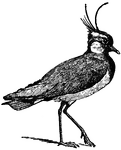
Lapwing (or Peewit)
A handsome plover-like bird of Northern Europe and Asia (Vanellus cristatus), also known in Great Britain…

Northern Lapwing
"The Lapwing with one wing fully extended, and forming a long lever; the other being in a flexed condition…
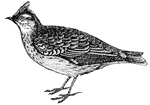
Lark
The lark is the living emblem of happy, peaceful labour, the songster of the cultivated earth, (Figuier,…
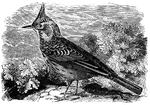
Crested Lark
Feeding mostly on worms and grain, the crested lark frequents Northern Europe i nthe summer, and Southern…

Shore Lark
Found in the north of Europe and Asia, specimens of the shore-lark have been ound as far south as France…

Shore Lark
The Shore or Horned Lark (Eremophila alpestris) is a bird in the Alaudidae family of larks.

Edward Lear
There was an old man who said, "Hush!; I perceive a young bird in this bush!"; When they said, "Is it…
